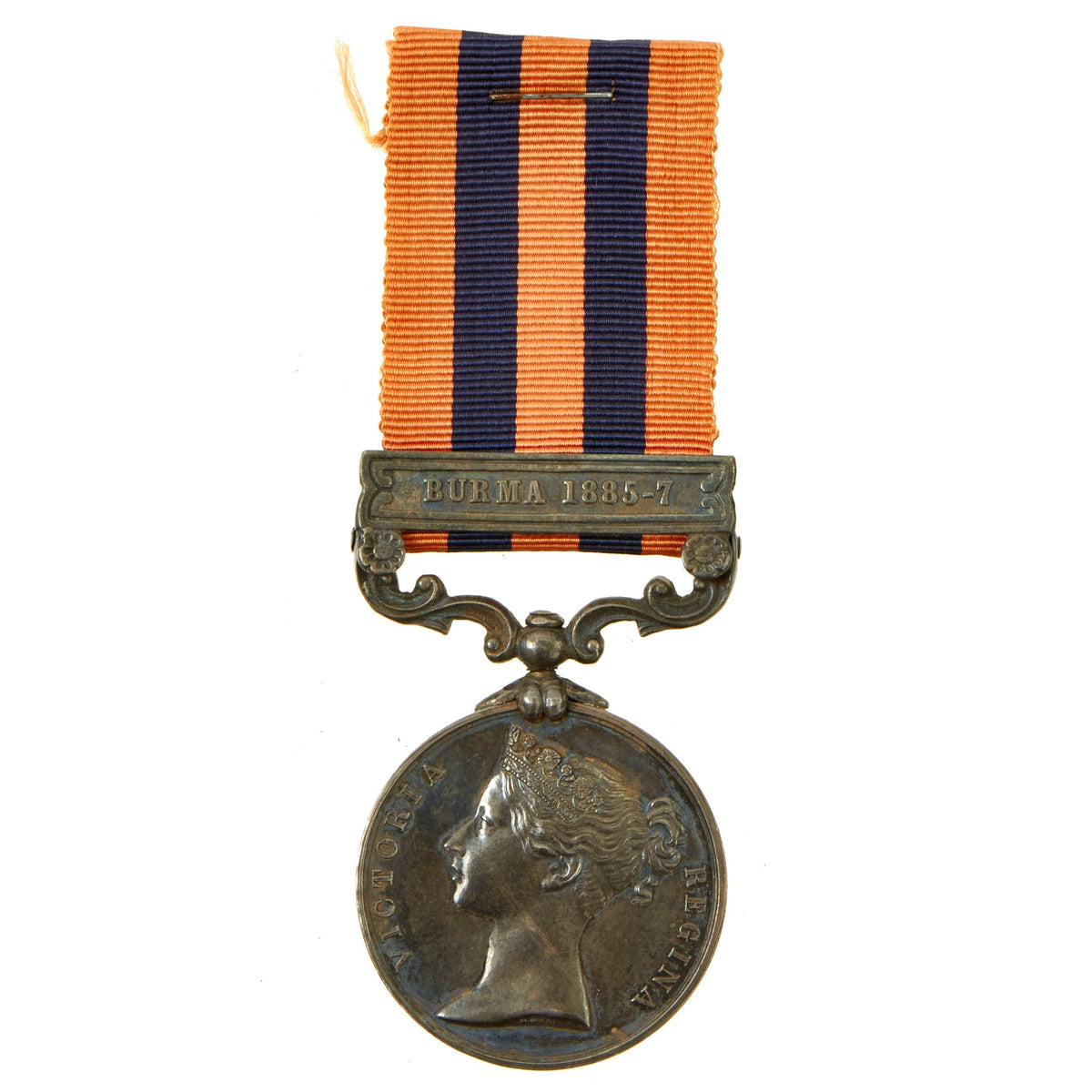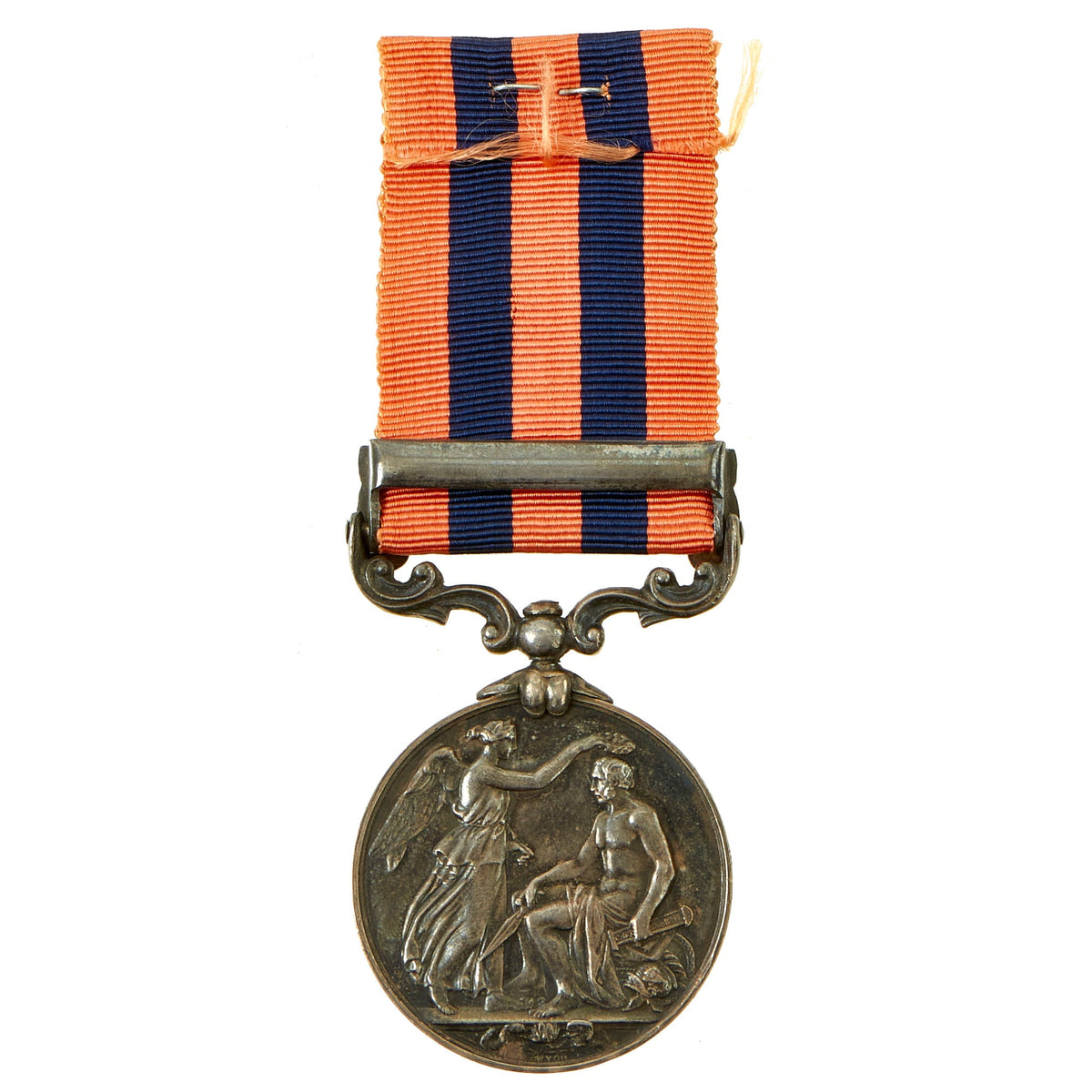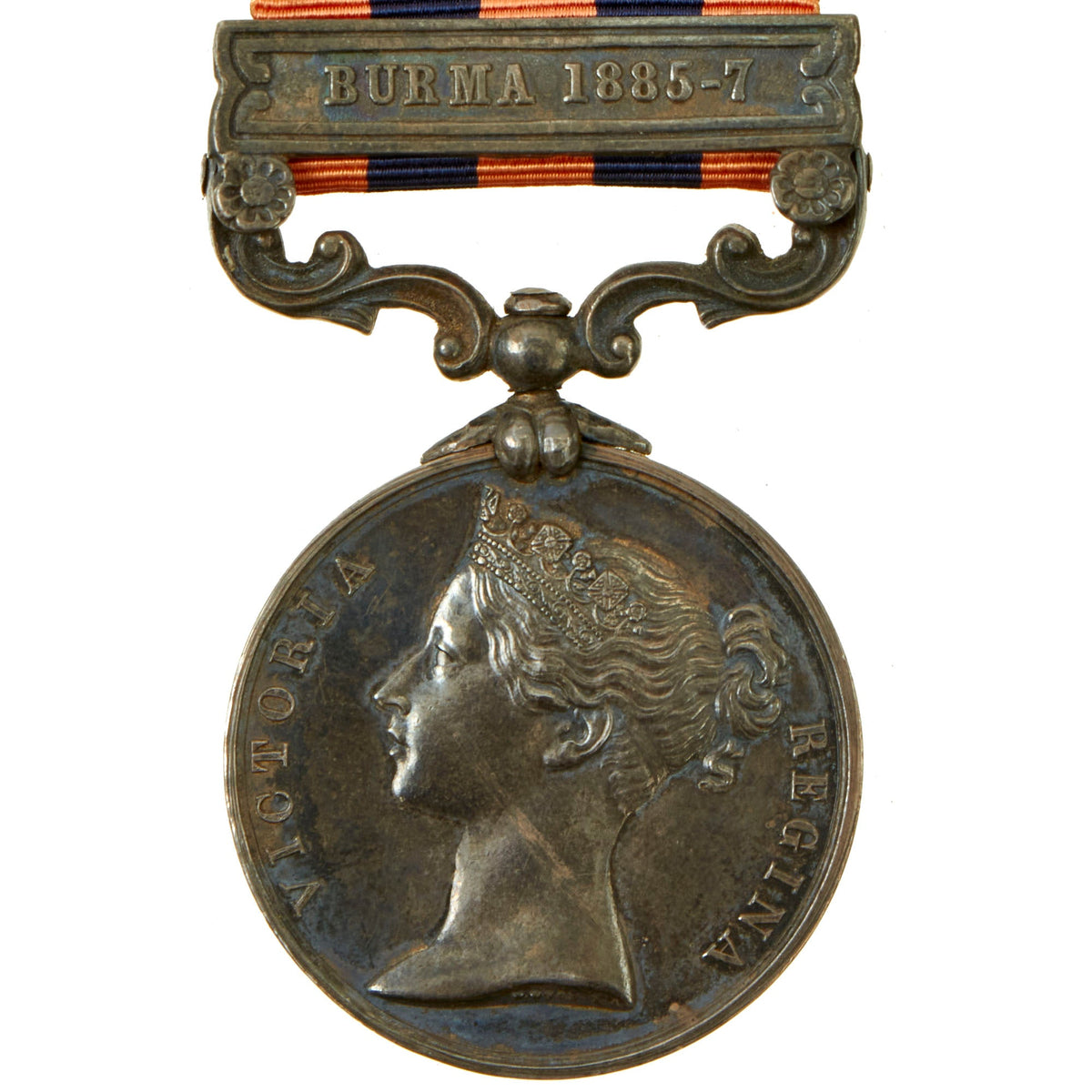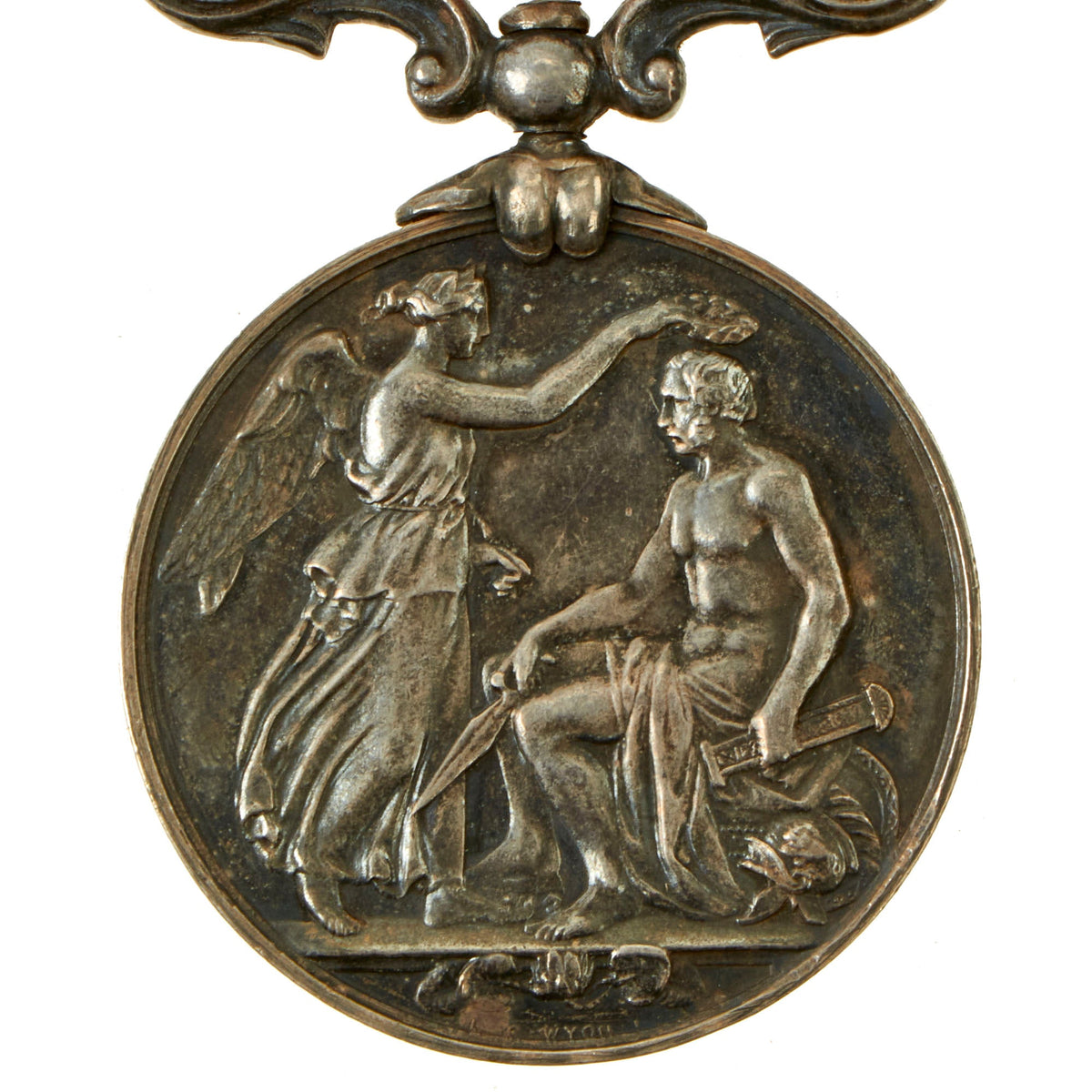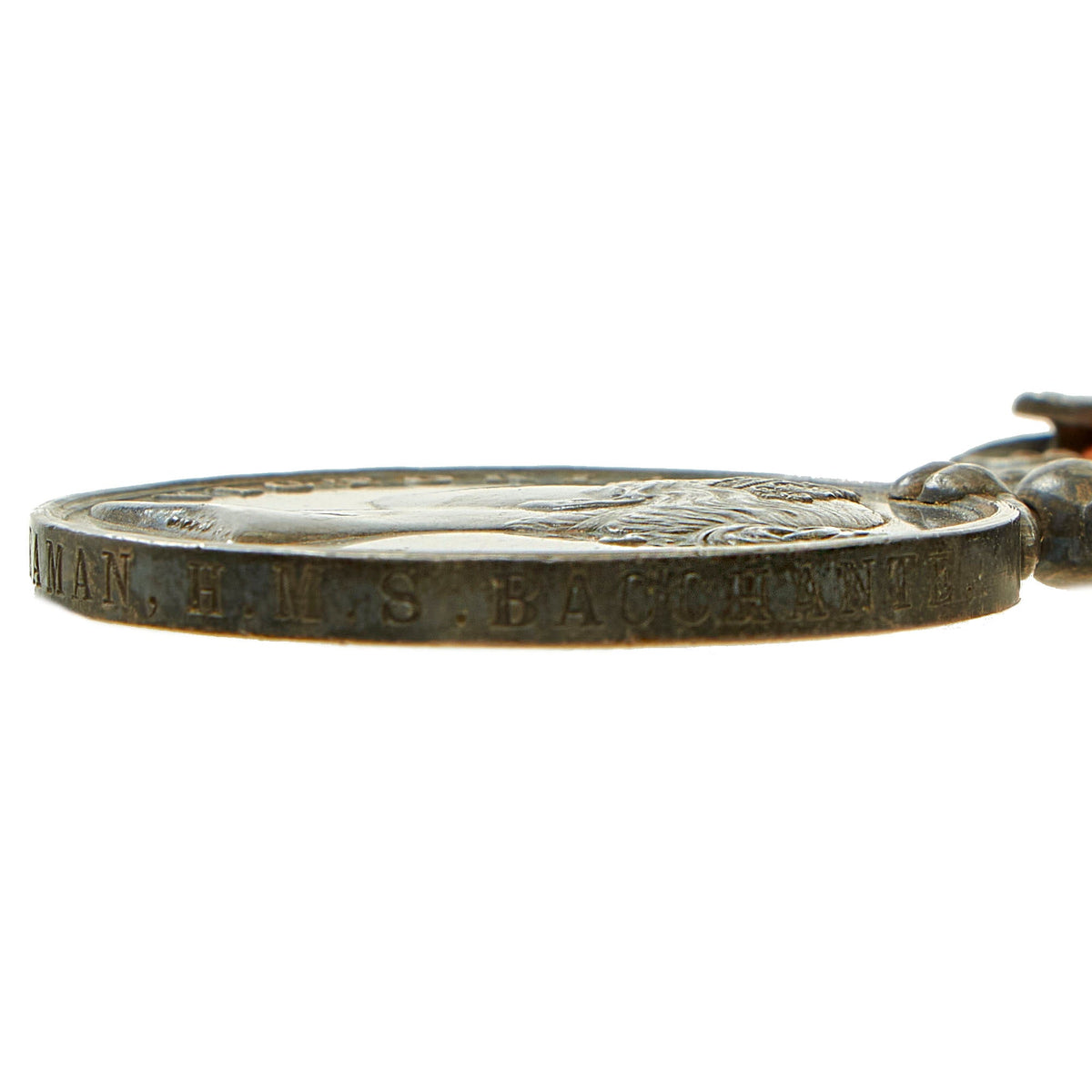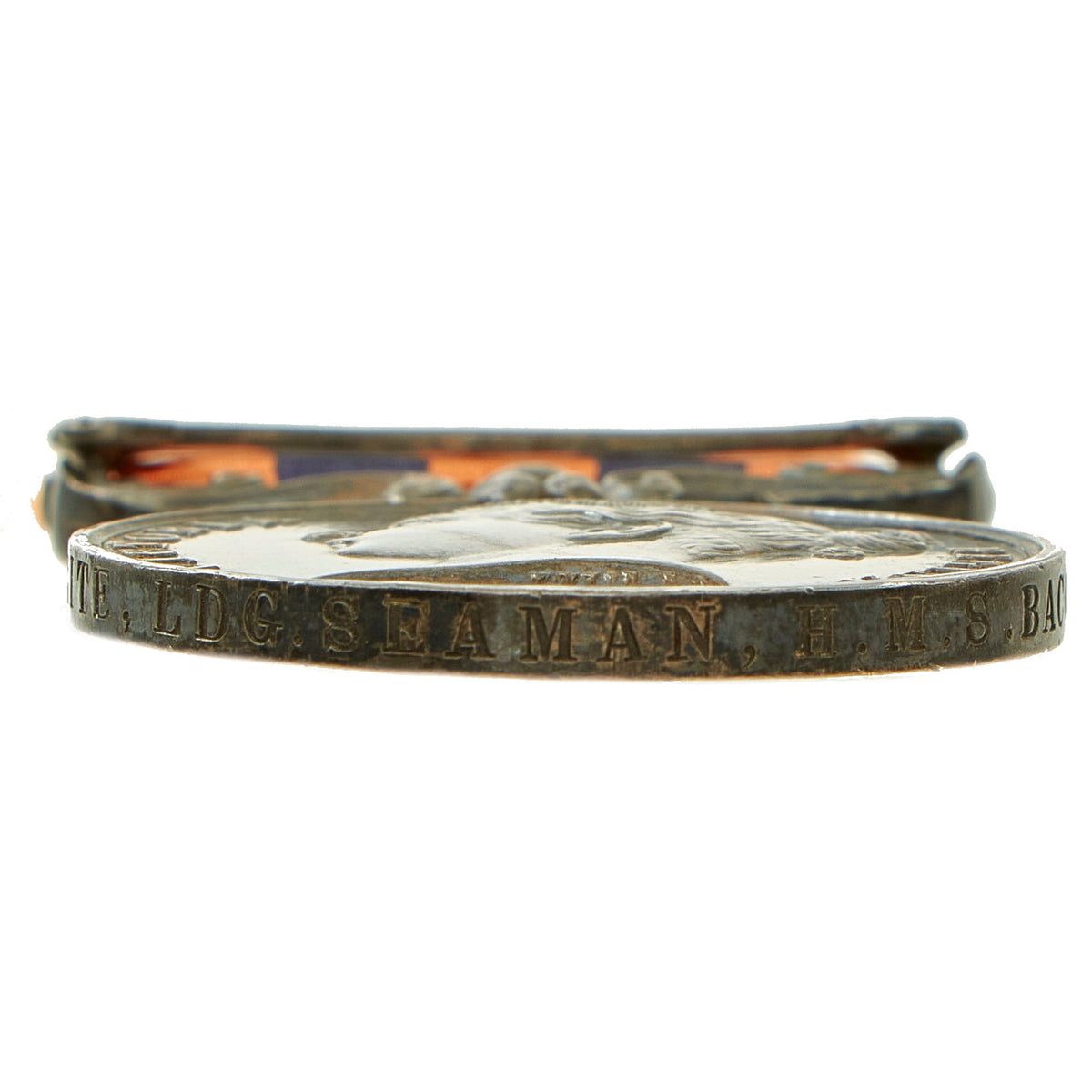Original British Burmese Resistance Movement Rim Impressed India General Service Medal (1854) With Burma 1885-7 Clasp For C.J. White, HMS Bacchante Original Items
$ 395,00 $ 118,50
Original Item: Only One Available. The India General Service Medal (1854 IGSM) was a campaign medal approved on 1 March 1854, for issue to officers and men of the British and Indian armies. It was awarded for various minor military campaigns in India and nearby countries, between 1852 and 1895.
In 1852 Lord Dalhousie had suggested a general service medal for smaller Indian campaigns, in order to limit the number of individual medals awarded.
Indian Army units made up the majority of forces present for nearly all campaigns. While the expeditions covered by the medal included few formal battles, most were undertaken in difficult terrain against determined resistance from local tribesmen.
In 1895, the India Medal was authorized to reflect service in further Indian expeditions, replacing the 1854 General Service Medal.
The medal is 1.4 inches (36 mm) in diameter, and was struck at the Royal Mint.
It was initially awarded only in silver. From the Burma 1885–87 clasp, medals in bronze were awarded to authorized native followers who accompanied the troops, such as bearers, sweepers and drivers.
The obverse bears a left-facing effigy of Queen Victoria wearing a diadem. Surrounding the head is the inscription VICTORIA REGINA.
The reverse depicts Victory crowning a seated warrior with a laurel wreath. In the exergue are lotus flowers and leaves.
It was always issued with the recipient’s rank, name and unit engraved or impressed on the rim. This example is impressed rather than engraved with the following:
C.J. WHITE LDG. SEAMAN. H.M.S. BACCHANTE
The medal is suspended by a scrolled bar.
The 1.25 inches (32 mm) wide ribbon is divided into five stripes, three red (faded to orange) and two dark blue, each 0.25 inches (6.4 mm) wide.
A lovely medal that comes more than ready for further research and display.
HMS Bacchante (1876)
HMS Bacchante was a Bacchante-class ironclad screw-propelled corvette of the Royal Navy. She is particularly famous for being the ship on which the Princes George and Albert served as midshipmen.
Bacchante was built at Portsmouth Dockyard and launched on 19 October 1876, the second ship of the three ship Bacchante class. She was armed with fourteen 7-inch (177.8 mm) muzzle-loading rifle guns and two 64-pounder torpedo carriages, and rated at 4070 tons.
The two oldest sons of the Prince of Wales had entered the navy in 1877, and by 1879 it had been decided by the Royal Family and the Government that the two should undertake a cruise. They were assigned to Bacchante, which was then part of a squadron intended to patrol the sea lanes of the British Empire. Queen Victoria was concerned that the Bacchante might sink, drowning her grandchildren. Confident in their ship, the Admiralty sent Bacchante through a gale to prove she was sturdy enough to weather storms. The Princes, with their tutor John Neale Dalton, duly came aboard on 17 September 1879. The Bacchante was to be their home for the next three years.
They made a number of cruises to different parts of the Empire with the squadron. Serving aboard the squadron’s flagship, HMS Inconstant at this time was their relation, Prince Louis of Battenberg. The squadron initially consisted of HMS Inconstant, Bacchante, Diamond and Topaze, the composition altering during the voyages as ships left, or were joined by new ones. Bacchante visited the Mediterranean and the West Indies, followed by later voyages to South America, South Africa, Australia, China and Japan. The Princes made regular diary entries, which were later published as two volumes in 1886 as The Cruise of Her Majesty’s Ship Bacchante. Photographs from the trip were later donated by Rev. Dalton, their royal tutor, and are now part of the Royal Collection Trust.
Of note during this time, the Bacchante briefly assisted in the First Boer War, before the squadron sailed again for Australia. Shortly after reaching the coast on 12 May, a heavy storm blew up and when it had abated, Bacchante was missing. After three days searching, news reached the squadron that Bacchante had had her rudder disabled, but had been able to reach safety at Albany.
Fast Shipping with Professional Packaging
Thanks to our longstanding association with UPS FedEx DHL, and other major international carriers, we are able to provide a range of shipping options. Our warehouse staff is expertly trained and will wrap your products according to our exact and precise specifications. Prior to shipping, your goods will be thoroughly examined and securely secured. We ship to thousands clients each day across multiple countries. This shows how we're dedicated to be the largest retailer on the internet. Warehouses and distribution centres can be located throughout Europe as well as the USA.
Note: Orders with more than one item will be assigned a processing date depending on the item.
Before shipping before shipping, we'll conduct a thorough inspection of the items you have ordered. Today, the majority of orders will be delivered within 48 hours. The delivery time will be between 3-7 days.
Returns
The stock is dynamic and we cannot completely manage it because multiple stakeholders are involved, including our factory and warehouse. So the actual stock may alter at any time. It's possible that you may not receive your order once the order has been made.
Our policy is valid for a period of 30 days. If you don't receive the product within 30 days, we are not able to issue a refund or an exchange.
You can only return an item if it is unused and in the same state as the day you received it. You must have the item in its original packaging.
Related products
Uncategorized
Uncategorized
Uncategorized
Uncategorized
Uncategorized
Armoured Fighting Vehicles of the World: AFVs of World War One (Hardcover Book) New Made Items
Uncategorized
Angolan Rebel 1970s era 60mm Inert Display Mortar from Angolan Civil War Original Items
Uncategorized
Uncategorized
Uncategorized
Uncategorized
Uncategorized
Uncategorized
Uncategorized
Uncategorized
Uncategorized
Armored Burgonet Helmet & Polearm from Scottish Castle Leith Hall Circa 1700 Original Items
Uncategorized
Uncategorized
